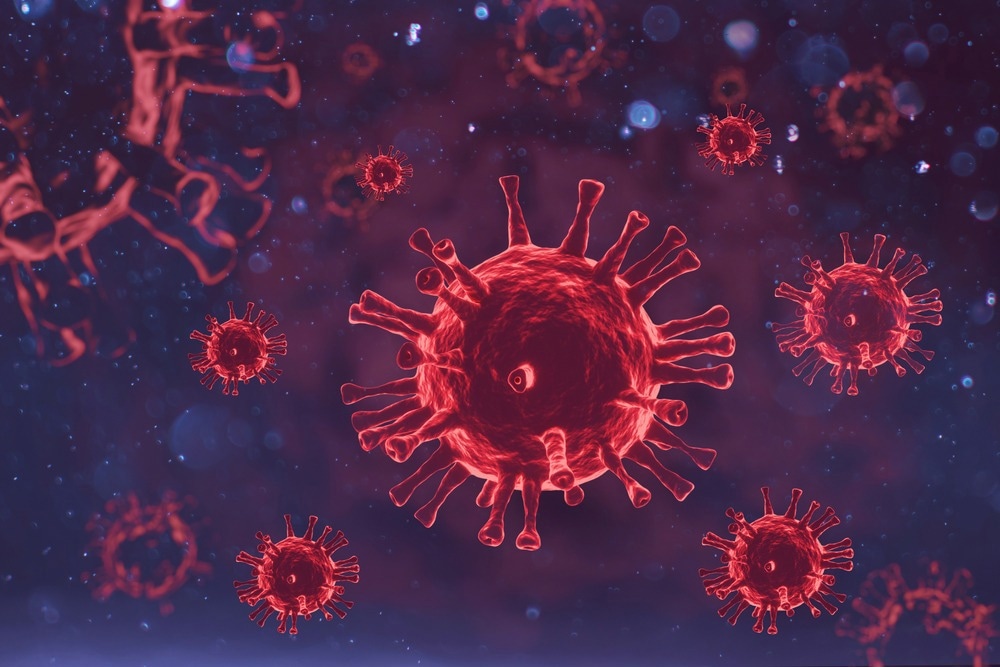In a recent study posted to the medRxiv* preprint server, researchers investigated whether severe coronavirus disease 2019 (COVID-19) patients exhibited inflammation and immune activation three months after hospitalization and explored the associations among COVID-19 severity, long COVID, and immune activation.
 Study: Prolonged T-cell activation and long COVID symptoms independently associate with severe disease at 3 months in a UK cohort of hospitalized COVID-19 patients. Image Credit: ker_vii/Shutterstock
Study: Prolonged T-cell activation and long COVID symptoms independently associate with severe disease at 3 months in a UK cohort of hospitalized COVID-19 patients. Image Credit: ker_vii/Shutterstock

 *Important notice: medRxiv publishes preliminary scientific reports that are not peer-reviewed and, therefore, should not be regarded as conclusive, guide clinical practice/health-related behavior, or treated as established information.
*Important notice: medRxiv publishes preliminary scientific reports that are not peer-reviewed and, therefore, should not be regarded as conclusive, guide clinical practice/health-related behavior, or treated as established information.
Background
Severe acute respiratory syndrome coronavirus 2 (SARS-CoV-2) infection symptoms vary widely from asymptomatic to high morbidity and even mortality. Severe COVID-19 has been associated with highly activated adaptive and innate immune responses.
While a rapid response consisting of T-cell activation and production of anti-SARS-CoV-2 antibodies has been observed for mild cases of COVID-19, severe SARS-CoV-2 infections have been associated with hyperactive immune responses and “cytokine storms” characterized by an abnormal increase in the levels of pro-inflammatory cytokines such as interleukins (IL).
Evidence from longitudinal studies suggests that pro-inflammatory cytokines, activated T-cells, inflammation, and abnormal immune responses persist in severe COVID-19 patients for eight months to a year.
Long COVID or post-acute sequelae of SARS-CoV-2 infection (PASC), which affects multiple organ systems and is prevalent in severe COVID-19 patients who required intensive care unit admissions, has also been associated with rapidly declining levels of memory T cells and elevated levels of cytotoxic T cells and type 1 cytokines such as IL-6 and IL-1β.
About the study
In the present study, plasma and peripheral blood mononuclear cells (PBMCs) were obtained from blood and serum samples of participants enrolled in the DIagnostic and Severity markers of COVID-19 to Enable Rapid triage (DISCOVER) study in the United Kingdom. The participants were classified into mild, moderate, and severe COVID-19 groups based on the supplemental oxygen, mechanical ventilation, intensive care unit, and non-invasive ventilation requirements.
To detect persistent immune activation at three months post-hospitalization, flow cytometry was used to assess the proliferation and phenotypes of natural killer (NK) cells, B cells, monocytes, CD4+ and CD8+ T cells, and T cells expressing gamma delta T cell receptors (TCR-γδ T). NK and T cells were further analyzed for activation, proliferation, differentiation, and cytotoxicity markers, including cluster of differentiation (CD) 38, CD69, chemokine receptor 7 (CCR7), and C-X-C Motif Chemokine Receptor (CXCR3), among others.
The plasma samples were also assessed for soluble pro-inflammatory chemokines and cytokines to decipher the underlying causes for the activation and proliferation of CD4+ and CD8+ T cells. The plasma was tested for 23 chemokines and cytokines, including granulocyte-macrophage colony-stimulating factor (GM-CSF), interferons (IFN) γ and α, a range of interleukins, monocyte chemoattractant protein-1 (MCP), macrophage inflammatory proteins (MIP) 1α and 1β, interferon γ-induced protein 10 kDa (IP-10), and tumor necrosis factor-alpha (TNF-α).
Additionally, an enzyme-linked immunospot (ELISpot) assay was performed to detect IFN- γ production in PBMCs to understand correlations among SARS-CoV-2-specific T cell function, COVID-19 severity, and long COVID symptoms. Intracellular cytokine staining and flow cytometry was then used to assess the relative roles of CD4+ and CD8+ T cells in the SARS-CoV-2-specific T cell response. Patients were also screened during the three-month follow-up for ongoing symptoms of long COVID, and associations between these symptoms and the immune profiles were evaluated.
Results
The results reported persistent CD4+ and CD8+ T cell activation in severe COVID-19 patients. Compared to patients with mild or moderate disease, severe COVID-19 patients also exhibited elevated levels of TNF-α, IL-7, IL-4, and IL-17 in their plasma. This indicated ongoing T cell activation since plasma cytokine levels at three months were similar to those during acute SARS-CoV-2 infection. However, the slow reduction of plasma cytokine levels indicated a gradual recovery of normal T-cell function by 12 months.
The presence of high levels of CD4+ T cells expressing CXCR3 suggested lung-tissue damage. Increased levels of granzyme B expression in CD8+ T cells also indicated higher cytotoxic abilities and T cell activation state. However, memory T cell and antibody responses against SARS-CoV-2 were robust in all patients, indicating that those were not affected by the ongoing T cell activation.
Comparisons between mild and moderate COVID-19 cases indicated that higher viral loads were linked to an increase in CD4+ and CD8+ T cells that produced IFN-γ and TNF-α. Additionally, when healthy donor T cells were treated with plasma from severe COVID-19 patients, IL-15Rα was upregulated, suggesting that severe COVID-19 patients contain factors that cause bystander activation of T cells driven by IL-15.
Severe COVID-19 patients reported a greater number of long COVID symptoms, which also correlated with the frequencies of activated CD4+ and CD8+ T cell subsets. However, the correlations disappeared when the results were adjusted for disease severity, sex, and age.
Conclusions
Overall, the results suggested that while severe COVID-19 is associated with persistent CD4+ and CD8+ T-cell activation and elevated plasma levels of T-cell secreted cytokines, long COVID symptoms and persistent immune activation are independently correlated with severe COVID-19.

 *Important notice: medRxiv publishes preliminary scientific reports that are not peer-reviewed and, therefore, should not be regarded as conclusive, guide clinical practice/health-related behavior, or treated as established information.
*Important notice: medRxiv publishes preliminary scientific reports that are not peer-reviewed and, therefore, should not be regarded as conclusive, guide clinical practice/health-related behavior, or treated as established information.